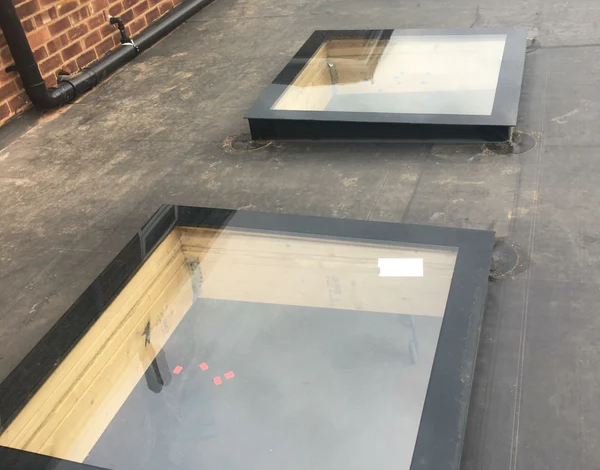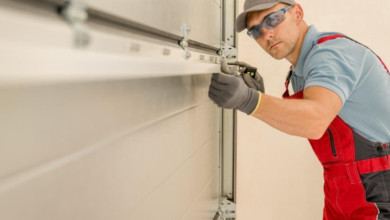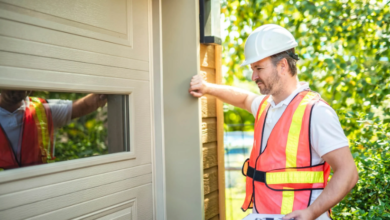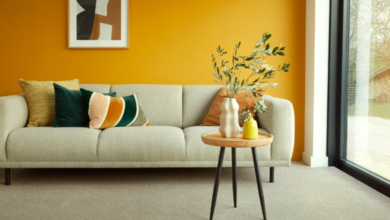Rooflights: Bringing Light, Style and Efficiency to Your Space

If you are planning to enhance the lighting, ventilation, and overall appeal of your home or workplace, installing rooflights is one of the most effective solutions. These innovative glazing units bring natural light from above, making spaces brighter, healthier, and more energy-efficient. They have become a popular choice in modern architecture, and for good reason: rooflights combine practicality with elegance, providing a design element that enhances both the inside and outside of a building.
What Are Rooflights?
Rooflights, also known as skylights or roof windows, are glazed panels fitted into a building’s roof to let natural daylight in from above. Unlike traditional vertical windows, they sit within the roofline, capturing sunlight at different angles throughout the day. Rooflights can be flat, domed, pitched, or even designed like lanterns, and may be fixed in place or open manually or electronically.
While older roof glazing often suffered from leaks or poor insulation, modern rooflights are highly engineered. Today’s products use advanced technologies such as double or triple glazing, low-emissivity coatings, and self-cleaning glass. This ensures not only exceptional light but also excellent thermal performance and long-term durability. For homeowners looking for high-quality, modern rooflight solutions, Skylights Roof Lanterns offers a wide range of options designed to combine style, performance, and reliability
Benefits of Rooflights
- The advantages of rooflights extend far beyond aesthetics. The most obvious benefit is the abundance of natural light they bring into a space.
- Rooms that would otherwise feel dark and enclosed are instantly transformed into brighter, more welcoming environments.
- This additional daylight can make small spaces appear larger and can create an atmosphere that feels more open and uplifting.
- Natural light is also known to have significant health benefits. Exposure to daylight helps regulate our body’s circadian rhythms, improving sleep patterns and boosting energy levels during the day.
- A well-lit home or office contributes to better mental health, increased productivity, and a stronger sense of wellbeing.
- Another key benefit is energy efficiency. With rooflights installed, the need for artificial lighting during the day is drastically reduced.
- High-performance glazing helps regulate indoor temperatures, preventing excessive heat loss in winter and limiting heat gain in summer.
- Over time, this can reduce energy bills, making rooflights not just a lifestyle upgrade but also a cost-effective investment.
- Ventilation is another factor to consider. Opening rooflights allow fresh air to circulate, improving indoor air quality and reducing issues such as condensation or dampness. In kitchens, bathrooms, or loft conversions, this is especially valuable.
- By encouraging natural airflow, rooflights can keep interiors comfortable while reducing reliance on mechanical ventilation systems.
- Finally, rooflights enhance property value. Homes with bright, airy interiors and modern design features tend to be more attractive to buyers.
- A stylish rooflight or roof lantern can serve as a focal point in a room, making the property stand out in a competitive market.
Types of Rooflights
Rooflights come in many forms, each suited to different needs and architectural styles. Fixed rooflights are among the most common and are designed solely to bring in natural light. These sealed units are ideal for spaces where ventilation is not required, such as hallways, landings, or living rooms that already have adequate airflow from other sources. They offer simplicity, reliability, and excellent insulation.
Opening rooflights provide both light and ventilation. They can be operated manually with a handle or pole, or electronically using switches, remote controls, or even automated sensors that respond to temperature or rain. These are popular in kitchens, bathrooms, and attic rooms, where controlling humidity and airflow is important.
Roof lanterns are another category, often chosen for flat roofs or extensions. These multi-panelled glazed structures project above the roofline in a lantern-like shape, adding drama and elegance to a space. Roof lanterns flood interiors with light from multiple angles and create a striking architectural feature that works well in open-plan living areas or dining rooms.
Dome rooflights, usually made from polycarbonate, are particularly common in commercial buildings such as warehouses, factories, and stairwells. They are lightweight, durable, and cost-effective, though they may not offer the same refined aesthetics as glass rooflights.
There are also specialist rooflights, such as access hatches that double as entry points to the roof for maintenance, or models with self-cleaning glass that require minimal upkeep. High-performance triple-glazed units are ideal for homes where energy efficiency and sound insulation are a priority.
See also: 5 Landscaping Hacks That Save Homeowners Money
Key Considerations Before Buying Rooflights
Choosing the right rooflight involves more than picking a style you like. Several practical factors should be considered to ensure long-term performance and satisfaction.
The first consideration is roof type and pitch. Flat roofs often require lanterns or domed rooflights that prevent water pooling, while pitched roofs integrate more seamlessly with flush glazing units. The structural strength of the roof is also important, particularly for larger installations, as additional reinforcement may be required. For expert guidance and a wide range of tailored rooflight options, homeowners can consult Skylights Roof Lanterns to find solutions that combine aesthetics, durability, and functionality.
Glazing is another crucial factor. Double glazing is standard, offering good insulation and soundproofing, while triple glazing provides superior thermal performance but adds cost and weight. Glass can be coated to reduce solar gain, filter UV rays, or even remain cleaner for longer thanks to self-cleaning technology.
Placement and orientation affect both light quality and energy efficiency. A south-facing rooflight will provide the most daylight but may also contribute to overheating in summer. North-facing units offer softer, more consistent light. For large spaces, several smaller rooflights may distribute light more effectively than a single oversized one.
Ventilation needs should also be evaluated. In moisture-prone areas, opening rooflights are preferable. Automated models can provide convenience, especially for hard-to-reach locations. Weatherproofing is equally critical. Proper sealing and flashing are essential to prevent leaks, and choosing a trusted manufacturer can make the difference between years of reliable service and constant maintenance headaches.
Finally, think about building regulations. In the UK, for example, rooflights must meet requirements for insulation, ventilation, and sometimes fire safety. Permits may be necessary in conservation areas or for listed properties. Factoring in both purchase and installation costs, along with potential long-term energy savings, will help you create a realistic budget.
Installation and Maintenance
Installation can be approached in two ways: DIY or professional. For small, simple rooflights, a skilled DIYer may be able to carry out the work, but precision is critical. Incorrect sealing or flashing can lead to leaks and damage. For larger or more complex units such as roof lanterns, professional installation is strongly recommended. An experienced installer will ensure the rooflight complies with regulations and performs as intended.
Maintenance is generally straightforward. Glass should be cleaned periodically to remove dirt, though self-cleaning coatings reduce the frequency of this task. Frames and seals should be inspected annually for wear or damage. Opening rooflights may require occasional lubrication of hinges or motors. Checking for leaks after heavy rain is a simple but effective way to catch problems early. High-quality rooflights are built to last, but regular care extends their lifespan significantly.
Regulatory and Environmental Aspects
Modern construction is increasingly focused on sustainability, and rooflights play a role in this shift. By maximising daylight and reducing reliance on artificial lighting, they help cut energy consumption. High-performance glazing further improves energy efficiency, reducing heat loss and lowering carbon footprints.
Regulatory standards ensure that rooflights contribute positively to a building’s overall performance. In the UK, Part L of the Building Regulations sets energy efficiency standards, while Part F addresses ventilation. Rooflights must meet minimum U-value requirements to limit heat transfer, and some projects may also require consideration of fire safety standards.
Environmentally, rooflights can be part of a broader green building strategy. Choosing models with recycled aluminium frames, sustainably sourced timber, or long-lasting components reduces their impact. Because they last for decades, a well-chosen rooflight is not only a sustainable product but also an investment in the future of the property.
Design Inspiration
Beyond their functional benefits, rooflights can completely transform a building’s design. In modern homes, slim-framed, minimalist rooflights complement clean architectural lines. A flat roof extension with a large roof lantern can turn an ordinary space into a spectacular kitchen or dining area flooded with natural light.
Traditional properties can also benefit. Timber-framed rooflights with heritage detailing can be designed to match period features while bringing contemporary performance standards. Even small interventions, such as a fixed rooflight above a staircase or hallway, can change the way a space feels by reducing shadows and creating a sense of openness.
Inside, the effect of rooflights can be amplified with thoughtful design choices. Light-coloured walls and reflective surfaces help bounce daylight deeper into the room. Pairing rooflights with tall vertical windows enhances the feeling of openness, while positioning them above key focal points such as kitchen islands or dining tables creates dramatic visual effects.
Common Challenges and Solutions
Like any building feature, rooflights can pose challenges, but most issues are easily managed with the right choices. Overheating and glare are common concerns, especially with south-facing units. The solution lies in choosing solar control glazing, integrating blinds or shades, or ensuring adequate ventilation.
Condensation can occur in areas with high humidity. This is best prevented by choosing opening rooflights that allow moisture to escape, along with proper room ventilation. Leaks are usually the result of poor installation rather than the product itself, which is why professional fitting is recommended for most projects.
Noise from rain or hail is sometimes raised as a drawback, particularly with polycarbonate domes. However, modern double and triple-glazed rooflights with laminated glass significantly reduce external noise, ensuring comfort even during bad weather.
Conclusion
Rooflights are more than just windows in the roof they are architectural features that can transform the way we experience a space. By flooding interiors with natural light, improving air quality, enhancing energy efficiency, and adding value to properties, they offer a combination of beauty and practicality. Whether you choose a simple fixed design, an opening model for ventilation, or a dramatic roof lantern to crown an extension, the impact of rooflights on comfort and lifestyle is profound.
When selected thoughtfully and installed correctly, rooflights provide decades of service. They align with modern needs for sustainability, wellness, and design excellence, making them an investment that pays back in both tangible and intangible ways. If you are planning a renovation, extension, or new build, exploring the wide variety of rooflights available today could be the key to creating a brighter, healthier, and more inspiring living space.



